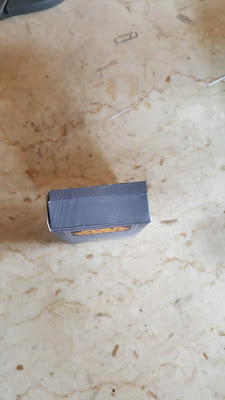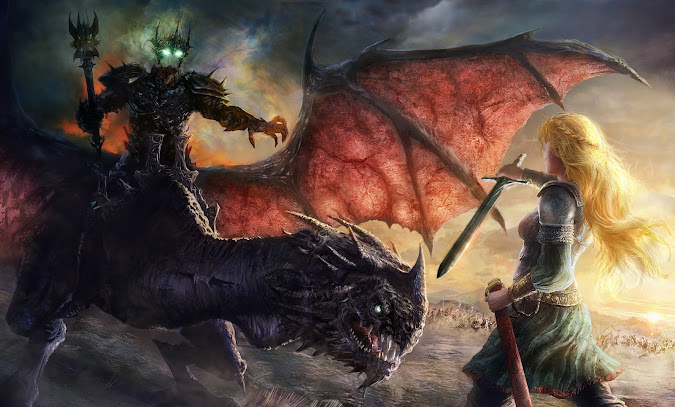Pure Sabacc: The Poker of the Star Wars Universe
Sabacc
Image Source: https://www.gamespot.com/articles/solo-a-star-wars-story-what-is-the-card-game-sabac/1100-6459178/
Image Source: http://starwars.wikia.com/wiki/Sabacc/Legends
Image Source: gamereview.xyz (service unavailable as of the time of writing)
I've done a couple of blogs recently about the official version of sabacc that was released as the Han Solo Card Game by Hasbro/Disney, how it's actually the Corellian Spike variant, and how it can be slightly altered to better reflect the betting nature of the game. This led me down the rabbit hole of securing a "full" sabacc deck, and exploring how to play the complete version of the game.
In doing so, I discovered that the rules that are all over the Internet are (perhaps unsurprisingly) confusing, arcane, and in some ways just don't make sense. This is particularly true in the area of "calling a hand." I strongly suspect that the people who wrote these rules (which I believe to originate with the West End Games Crisis on Cloud City RPG supplement) had no idea what calling is because they've never played poker.
Quite frankly, the rules make for a gambling game that nobody would really want to play, or one that would lead to a stalemate with everyone sitting around staring at each other when nobody wants to call the hand, but nobody's willing to bet anymore.
To that end, I've tried to streamline and clean up the rules, and am presenting them here for your enjoyment.
Image Source: https://www.youtube.com/watch?v=O_E_9k-H9TU
What Is Sabacc?
Sabacc is the most popular card game that throughout the
Star Wars Galaxy. Perhaps most famously, it’s the game that Han Solo played to
win the Millennium Falcon from Lando Calrissian, and which, in the Legends canon, Lando played to win Cloud City. It’s a gambling game with elements
similar to both poker and blackjack, with an added element of random risk added
on top.
The Cards
Sabacc is played with a deck of 76 cards made up of four
suits--Sabers, Staves, Flasks, and Coins--and a set of face cards. Each suit is
made up 11 regular cards (numbered 1-11) and four ranked cards: the Commander,
the Mistress, the Master, and the Ace (numbered 12-15).
The set of "face" cards (or arcana) consists of 16 cards, each with a
negative value. In addition, each face card has a special name and symbol.
There are two instances of each face card in the deck. The full complement of cards in a deck are as
follows:
Four Suits (Sabers, Flasks, Coins, Staves) valued 1-11
Ranked Cards (one set for each suit):
Four Suits (Sabers, Flasks, Coins, Staves) valued 1-11
Ranked Cards (one set for each suit):
- Commander (value 12)
- Mistress (value 13)
- Master (value 14)
- Ace (value 15 or 1)
- The Star (value -17)
- The Evil One (value -15)
- Moderation (value -14)
- Demise (value -13)
- Balance (value -11)
- Endurance (value -8)
- Queen of Air and Darkness (value -2)
- Idiot (value 0)
Image Source: http://starwars.wikia.com/wiki/Sabacc
If this looks like a tarot deck to you, you're not far off the mark. The original design for a sabacc deck was inspired by the Rider-Waite Tarot, and in the Legends canon, certain cultures actually use sabacc cards for fortune telling purposes. To that end, you can make a sabacc deck from tarot cards; you'll need two identical standard decks, because while you'll only need one set of each suit, you will have to combine the major arcana from the two. Use the major arcana with the numeric values above, and remember that they are all negative value.
Representing the Sabacc Shift
In the Star Wars galaxy, electronic pulses randomly shift
the faces of the cards until they're locked in place when the player locks them
in an "interference field." To represent this, these rules utilize a
dice mechanic involving “Sabacc Dice,” which are the same as those used in the
Corellian Spike variant of the game. If you've never heard of this before, don't worry. We'll get to that. This note is for those who are familiar with the idea and are wondering out of the gate how it works.
Rules of Play
The object of sabacc is to have the highest card total which
is less than or equal to 23. A total which is over 23, under negative 23, or
exactly 0 is called a "bomb out," and requires the holder of the hand
to pay a penalty, as described below.
There are two pots to be won in the game of sabacc. A pot is
the total amount of credits staked by all of the players in one hand of the
card game (just like poker). Each pot should be kept clearly separate from the
other. The first of the two pots is called the "hand pot" and is
taken by the winner of the current hand. The second is the "sabacc
pot" and continually builds over several hands until it is won with a
special hand, as described below.
To start a game of sabacc, choose one player to be the
dealer of the first hand. Other players wishing to be dealt into a hand must
first ante by placing one credit into the hand pot. Each player must also ante
one credit into the sabacc pot it is empty, including the first hand of the
game.
Each player is then dealt two cards. This is their starting
hand.
Betting Phase:
After cards have been dealt, the player to the left of the
dealer has the option to place an initial bet, or stand pat. If they choose not
to bet, play passes to the player to their left, who may initiate betting, and
so on. If any player initiates betting, all other players must at least match
(“call”) their bet, in turn. Any player can also raise the bet, requiring all other
players to match the new total, or fold. The betting phase continues until all
players have called the current bet, or folded.
Shifting Phase:
At this point, the player whose turn it is rolls the sabacc
dice. If the symbols on the dice match, all players must discard their entire
hand, and draw an equal number of new cards. This is called a “sabacc shift.”
Draw Phase:
Next, each player has the option to take one of several
actions. They may:
- Draw a card from the deck
- Discard a card from their hand and draw a card from the deck
- Stand pat (do nothing)
The Interference Field:
Each player also has an “interference field.” Cards placed
into the player’s interference field are immune to sabacc shifts, but they are
also not part of the player’s existing hand. They exist to be added to or
subtracted from the player’s hand at any time. During the draw phase, a player
may in addition to the draw phase actions above, also alter their interference
field, as follows:
- Place one card into the “interference field” if they hold more than two cards in their hand.
- Take one card from their interference field into their hand
- Place one card into the interference field and place one card from the interference field into their hand.
To place a card into the interference field, a player simply
lays it face up in front of them for all to see. Any cards currently face up
in the interference field are considered “locked.” If a sabacc shift occurs,
cards in the interference field remain.
Continuing Play
After the draw phase, play continues to the second betting
phase. At this point the player second from the dealer’s left starts the
betting. Play proceeds exactly as above. In the following round, the third
player from the dealer’s left commences betting, and so forth, with betting,
shifting and draw phases.
Ending a Hand
Each hand proceeds to a minimum of four rounds, or a number
of rounds equal to the players at the table, whichever is fewer (or however many rounds the table rules specify). At any time after the minimum
number of rounds has passed, a player may at the beginning of the betting round, also "call the hand."
Calling the hand signifies that the current betting round
is the final betting round; there will be no shift phase and no draw phase. Any player who is still in the hand may call at any time during the betting round; a player who folds may also choose to call the hand as they fold; this does require them to pay the penalty to the sabacc pot, as defined below under "calling and losing." After they fold, however, the hand cannot be called.
When all players have called the final betting round, or all but
one player has folded, the hand ends. All remaining players must display their
hands and call out their totals. The best hand wins the hand pot.
A player who scores a “pure sabacc,” or a total of exactly
either 23, or -23, wins both the hand pot and the sabacc pot. Likewise, a
player who scores an “idiot’s array,” or three card hand of 0, 2, and 3, wins
both the pot and the sabacc pot.
The hierarchy of hands is as follows, from best to worst:
- Idiot’s array (3 cards; 0, 2, 3 or 0, -2, -3; a "literal" 23)
- Full Staves/Coins/Flasks/Sabers (a hand totalling exactly 23 or -23 where all cards are the same suit)
- Pure sabaac (a hand whose cards total exactly 23 or -23; this is also called "pure sabacc")
- Any hand including an Idiot beats an equal hand not including an Idiot.
- More cards trump fewer cards (a 21 with 5 cards beats a 21 with 3 cards)
- In ties, positive totals beat negative totals (+23 with 4 cards trumps -23 with 4 cards)
Sudden Demise
If two players have an exact tie score—the same total and
the same number of cards, a sudden demise occurs. Each player is dealt a single
card which is added to their hand. The best hand which is still under 23 wins.
If both players bomb out, neither wins and the hand pot goes into the sabacc
pot.
In the case of both players having a pure sabaac, sudden
demise does not count the totals of their hands; a single card will determine
the winner of both pots.
Folding
When a player folds their hand, they must pay a 1 credit
penalty to the sabacc pot. If they cannot pay the penalty, they are out of the
game.
Bombing Out
Any player whose hand is greater than 23 or lower than -23
when hands are revealed has “bombed out.” They must pay a penalty to the sabacc
pot equal to the sum total of the hand pot. If they cannot, they pay all their
remaining credits to the sabacc pot and are out of the game.
Calling a Hand and Losing
If the player who calls the hand, initiating the final round
of betting, does not win the hand, they must pay a penalty to the sabacc pot equal to the total value of the hand pot, exactly as if they
had bombed out. If they cannot pay the penalty, they place all their remaining credits into the sabacc part, lose the game, and are out.
Variant Rules
1.
2. Players can attempt to reach as close to 0 as possible,
instead of 23. In such a game, a result of 0 is pure sabaac, and the best
version would be Ace, Idiot, and Ace. The Idiot’s Array would still exist in
this variant, and would still be 0, 2, and 3.
3. Every player rolls for a Sabacc Shift during every turn on the draw phase. This will vastly increase the frequency of shifts in game.
4. A Sabacc Shift roll is made at the end of the final betting round, before cards are revealed. Regardless of the outcome of the roll, when cards are revealed, the best hand is made from all cards in the player's hand, and those locked in their interference field. This can completely change the fortune of the players at the table at random, but also adds an element of "Texas Hold 'Em" to the game.
Afterword
These rules have been streamlined and clarified from the
Legends-sourced rules floating around the web. The goal was to clarify some of
the more arcane and confusing aspects such as “calling hands.”
Hopefully they serve well for those looking to enjoy the
thrill of sabacc in-universe or at the dining room table. What are you waiting
for? There’s Millennium Falcons and Cloud Cities to win!
Where Can I Get a Sabacc Deck?
You can't get a full sabacc deck commercially; only the Corellian Spike variant is available as seen in the Solo movie. As I mentioned above, you can make your own by combining two tarot decks together. There are also some great people around who are making downloadable decks available for free. I have made decks from two of these. The first is one that is designed after the appearance of the cards in the Star Wars: Rebels animated series. These can be found here:
The other is a custom downloadable sabacc deck put up by an artist at DeviantArt:
I made the first ones by printing them off on 60lb paper, running the pages through my laminator, and cutting them down with a guillotine cutter. They worked out well, though I don't own a corner cutter, so they've got sharp corners.
The "Huntress Gallery" deck I like the images a lot more, but I am not crazy about the card backs. So for that one I went to http://www.makeplayingcards.com/ and created a custom deck there, using the backs from the Rebels deck with the fronts from Huntress' art. It was more expensive than the homemade decks, but came out very nice, and only took about a week or two, to arrive. The process of making the cards at MPC.com was very painless and intiutive as well, once you find the right template to use (Hint: you're looking for one that lets you completely customize the art on front and back, with no pre-generated embedded text).
Since they were so expensive, I didn't buy a box. I did, however, find templates for printable card boxes here: https://www.thegamecrafter.com/publish/product/PokerTuckBox72 and with a bit of work in my graphics program, some 90 lb. cardstock, and Elmer's Glue, I was able to make a nice tuck box that neatly fits my cards.
Here are some images of my deck from MPC, the box, and the rules booklet I made with these very rules. The booklet was done with painstaking layout work in MS Word using tables, then cutting it down with a guillotine cutter and fastening with a booklet stapler.
Here are some images of my deck from MPC, the box, and the rules booklet I made with these very rules. The booklet was done with painstaking layout work in MS Word using tables, then cutting it down with a guillotine cutter and fastening with a booklet stapler.
What are your thoughts? Let's hear your comments below!

















Comments
Post a Comment